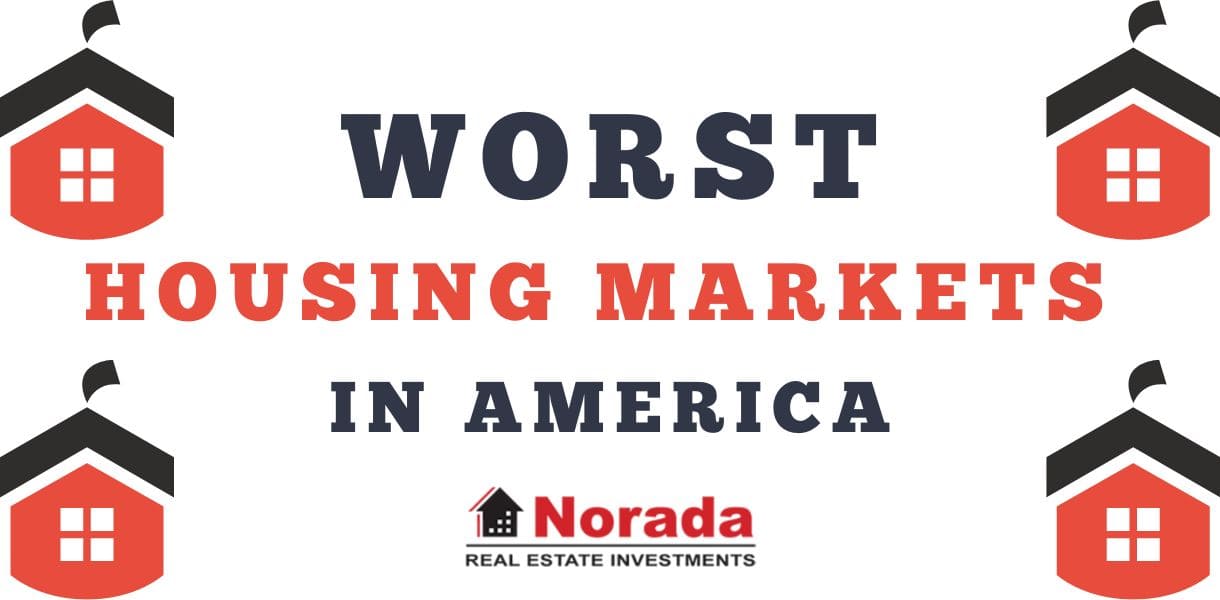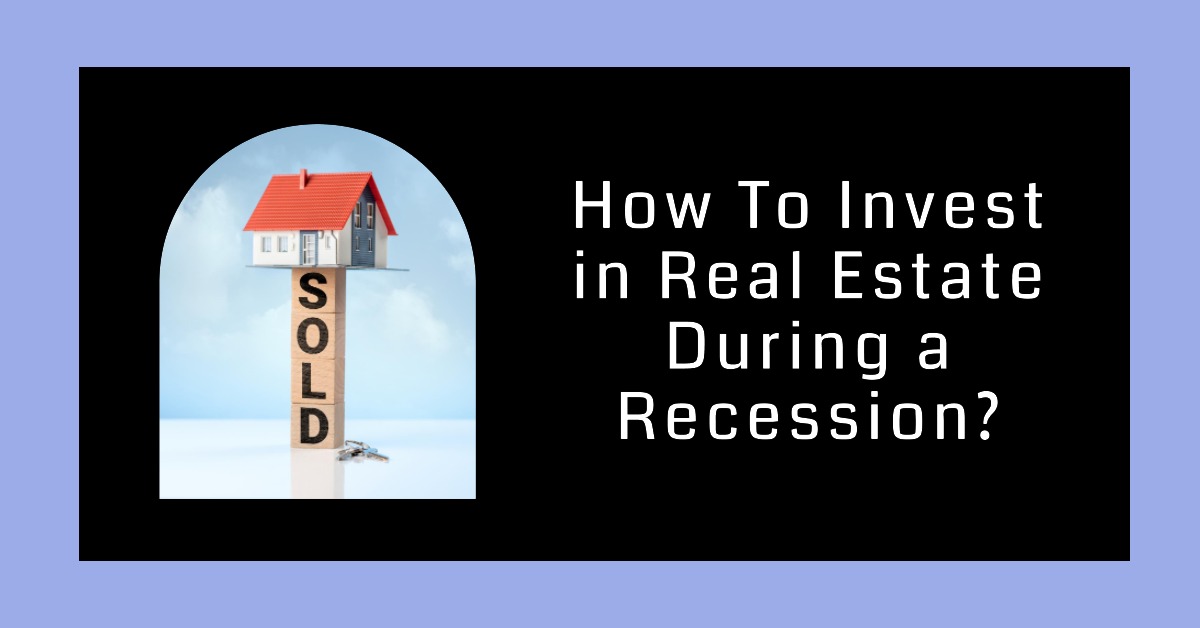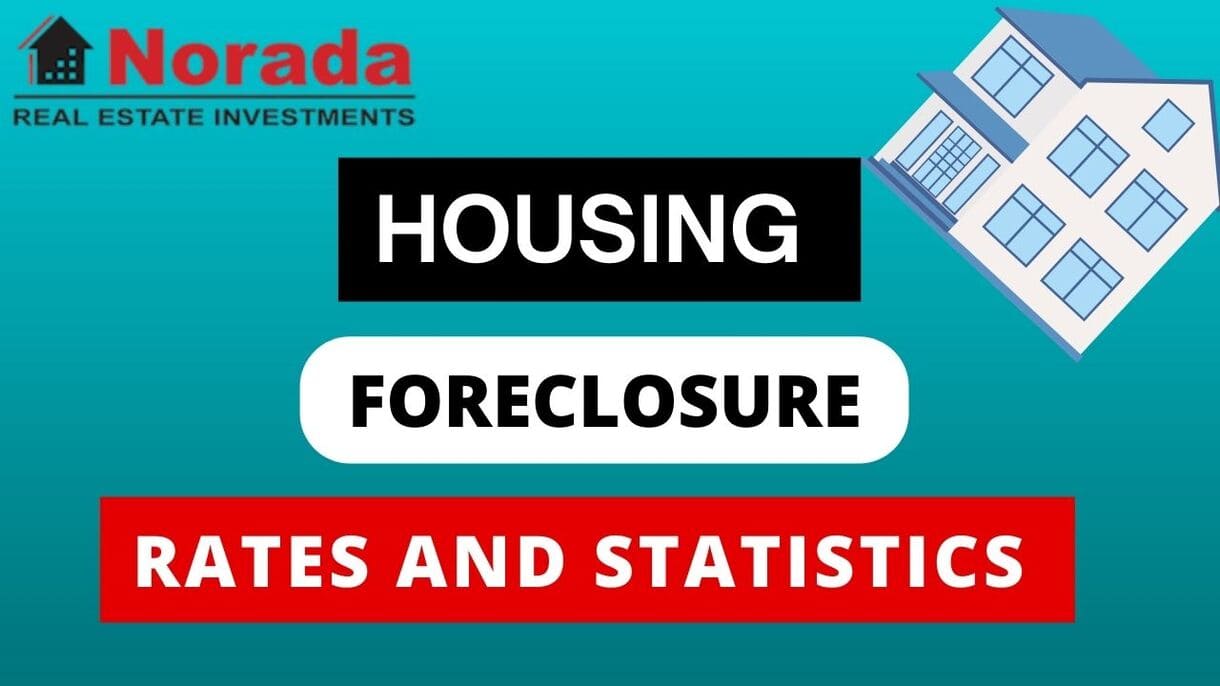I constantly hear the question that weighs heavily on the minds of so many: Will the housing market crash in 2025? It’s a valid concern, especially after the roller-coaster ride we've all been on. My definitive answer is no, I do not believe the housing market will crash in 2025.
Instead, I see a market rebalancing, becoming more accessible for certain buyers, but ultimately not succumbing to a dramatic collapse. We're looking at a continued, slow shift rather than a sudden plunge. Let me explain why I feel this way, pulling back the curtain on what the pros are predicting and adding my own two cents from years of observation and practical experience.
Will the Housing Market Crash in 2025: Expert Forecast
For many years now, the idea of a housing market “crash” has become almost mythical, often conjuring images of the 2008 financial crisis. I understand why people are so sensitive to this term. That period left deep scars, altering how an entire generation views homeownership and financial stability.
But what I've learned, and what I constantly remind people, is that this isn't 2008. Today's market is built on different foundations, with stronger lending standards, significant homeowner equity, and a persistent supply shortage that acts as a fundamental floor for prices. When I look at the data and consider the real people I work with every day, I see resilience, not fragility.
So, while the headlines might still try to sensationalize every dip, I encourage you to look deeper with me. Let's break down what the major players in the real estate world are expecting for 2025 and why their nuanced predictions paint a picture far removed from a “crash.”
The Forecasters Weigh In: A Look at the Leading Predictions
Different organizations approach market forecasting with slightly different lenses, but when you put their insights together, a clearer picture emerges. I always find it fascinating to see where they converge and where they diverge, because those differences often highlight the specific factors they prioritize.
NAR's Optimistic View: Brighter Days Ahead, Says Lawrence Yun
Lawrence Yun, the Chief Economist for the National Association of REALTORS® (NAR), has a consistently optimistic outlook, and his recent comments at the 2025 REALTORS Legislative Meetings echoed this sentiment. He talks about “brighter days on the horizon,” and from my perspective, this optimism stems largely from the anticipated movement in mortgage rates. He views lower rates as a “magic bullet,” and I can absolutely see why. Even small dips in rates can unlock affordability for many, bringing dormant buyers back into the fold.
Here’s a snapshot of what NAR is predicting for 2025 and beyond:
- Existing Home Sales: Yun expects a 6% rise in 2025, which he sees accelerating to an 11% climb in 2026. This is a significant recovery in activity after quieter years, and it suggests people will start feeling more comfortable making moves.
- New Home Sales: He projects a 10% increase in 2025, followed by another 5% in 2026. New construction is so important right now, as it’s the primary way to chip away at our long-standing housing shortage. I truly believe we need more homes built, plain and simple.
- Median Home Prices: NAR forecasts continued modest growth, with prices rising 3% in 2025 and 4% in 2026. This isn't the double-digit appreciation we saw during the pandemic boom, but it's growth, indicating a healthy market, not a crashing one.
- Mortgage Rates: This is the big one for NAR. Yun anticipates rates averaging around 6.4% in the second half of 2025, dipping further to 6.1% in 2026. If this holds true, it would be a huge sigh of relief for many first-time buyers I talk to.
Zillow's Cautious Outlook: A Gentle Drift Downward
Zillow, with its deep dive into home values and rental data, offers a slightly more subdued, almost lukewarm forecast. While they don't predict a crash, their outlook suggests a small downward adjustment in home values and a continued, but slow, recovery in inventory. I see Zillow's perspective as one that truly highlights the continued affordability challenges and the ongoing shifts within the market.
Key points from Zillow’s latest forecast:
- Home Values: Zillow expects typical home values to drift down slightly, ending 2025 about 2% below where they started the year. This is a larger decline than their previous forecast, which tells me they’re seeing some continued market softening.
- Inventory Recovery: This is a big theme for Zillow. They predict inventory will continue to grow significantly, potentially approaching pre-pandemic levels by the end of 2025. This is fueled by new listings outpacing sales. I’ve seen this personally in some areas; more homes on the market means more choices for buyers.
- Existing Home Sales: They anticipate 4.16 million existing home sales by the end of 2025, a modest 2.5% improvement over the previous year. This suggests a very slow uptick in transaction volume.
- Rent Growth: Zillow notes a softening in rent growth for both single-family and multifamily units. This is interesting because rising for-sale inventory gives more options, which takes pressure off rents. They project single-family rents to rise 2.75% in 2025 (down from 4.5% in 2024) and multifamily rents to increase by just 1.3% in 2025 (down from 2.4% in 2024). This tells me that people are finding more negotiating power on the rental front.
Realtor.com's Rebalancing Act: A Shift Towards Buyers
Realtor.com’s 2025 forecast focuses heavily on the idea of the market “rebalancing,” with market power shifting towards buyers. This aligns with what I'm seeing on the ground as well: an easing of the frantic competition that characterized the last few years. While their numbers might seem a bit conservative compared to NAR, I think their emphasis on the buyer's increasing leverage is spot on.
Here’s a detailed look at Realtor.com’s projections for 2025:
| Key Housing Indicators (Realtor.com) | 2025 Forecast REVISED | 2024 Historical Data | 2013-2019 Historical Average |
|---|---|---|---|
| Mortgage Rates (avg) | 6.7% | 6.7% | 4.0% |
| Mortgage Rates (year-end) | 6.4% | 6.7% | N/A |
| Existing Home Median Price App. (Y/Y) | +2.5% | +4.5% | +6.5% |
| Existing Home Sales (Y/Y) | -1.5% | -0.6% | +2.1% |
| Annual Total Existing Home Sales | 4.00 million | 4.06 million | 5.28 million |
| Existing Home For-Sale Inventory (Y/Y) | +16.9% | +15.2% | -3.6% |
| Single-Family Housing Starts (Y/Y) | -3.7% | +6.9% | N/A |
| Single-Family Housing Starts (Annual) | 0.98 million | 1.0 million | 0.8 million |
| Homeownership Rate | 65.2% | 65.6% | 64.2% |
| Rent Growth | -0.1% | -0.2% | +5.2% |
Realtor.com highlights several key trends for 2025:
- Home Sales Steady: They expect sales to land at 4 million in 2025, just slightly behind 2024. This suggests a continued slow pace, not a sudden drop.
- Price Growth Softens: Home prices will still climb, but their report forecasts a softer growth of +2.5%. This is a noticeable slowdown from previous years, and what I see as a healthy correction in many areas.
- Mortgage Rates Ease Slowly: While the annual average for mortgage rates is expected to match 2024 at 6.7%, they anticipate a dip to 6.4% by year-end. This slow, gradual dip is crucial. As Realtor.com points out, even a quarter-percentage point drop on a $350,000 loan can mean nearly $70 in monthly savings – that's real money for a family.
- Rental Market Attractiveness: Renting continues to be an attractive option, with rent growth softening and easing for 23 straight months. This creates a fascinating dynamic where, in many markets, renting is significantly more affordable than buying a starter home. I’ve heard countless stories from potential buyers who are simply opting to rent longer to stay on budget.
Synthesizing the Data: What I See on the Ground
When I look at these forecasts together, a common thread emerges, despite some numerical differences: none of them predict a crash. What they do predict is something far more nuanced and, in my opinion, healthier: a market that is slowly but surely finding its balance.
Here’s my take:
- No Crash, Just a Rebalancing: The consensus is clear: we won't see a collapse in home values like in 2008. Instead, what NAR calls “brighter days,” Zillow calls a “drift down,” and Realtor.com calls a “rebalancing” all point to a market where the frantic bidding wars are less common, and buyers have a bit more breathing room. From what I’m observing, this means offers with contingencies are more accepted, and sellers are more open to negotiation.
- Mortgage Rates are the Linchpin: All three outlooks emphasize how critical mortgage rates are. NAR sees them as the “magic bullet,” while Zillow and Realtor.com anticipate a slow easing. I agree with Yun: if rates move sustainably lower, it will significantly boost sales. The psychological impact of rates, coupled with the actual financial burden, cannot be overstated. I've seen so many hopeful buyers on the sidelines, just waiting for that affordability threshold to be met by a lower rate.
- Inventory is Key, but Regional Differences Persist: Zillow and Realtor.com both stress the continued recovery of inventory. More homes for sale means less competition and more buyer choice, which helps put downward pressure on prices or at least slows their growth. However, based on my local market observations, this inventory rebound isn't happening uniformly across the country. Markets in the Northeast and Midwest, for instance, still feel incredibly tight, making them consistently “hotter” than some areas in the South and West where supply has recovered more robustly. This is why it’s critical to remember that “the national market” is really a mosaic of hundreds of local markets. What applies in Dallas might not apply in Boston.
- Affordability Remains a Challenge: Even with softening prices or slower growth, the underlying issue of affordability is still a huge hurdle for many. Realtor.com’s data showing renting still overwhelmingly cheaper than buying a starter home in almost every metro area (except Pittsburgh, interestingly!) speaks volumes. I worry about the long-term implications for younger generations and first-time buyers who are finding it harder and harder to break into homeownership. This isn't a market on the verge of collapse, but it is one that's struggling with access for a significant portion of the population.
Deep Dive into Key Market Influencers
Understanding the big picture means digging into the details that shape it. The housing market isn't a single switch; it's a complex machine with many moving parts.
Mortgage Rates: The “Magic Bullet” or Persistent Hurdle?
I truly believe mortgage rates are the most impactful factor in today's housing market. During the pandemic, ultralow rates fueled a frenzy. When rates shot up, the market effectively froze for many. The idea that rates could be a “magic bullet,” as NAR's Yun suggests, rings true because even small dips can create significant monthly savings. For example, Realtor.com illustrated that a quarter-percentage point drop can save roughly $70 a month on a $350,000 loan. That $830 a year might not sound like a fortune, but for a family on a tight budget, it can mean the difference between qualifying for a mortgage and staying on the sidelines.
The Federal Reserve plays a huge role here. Their policy decisions on interest rates, while not directly controlling mortgage rates, heavily influence them. Realtor.com notes that the Fed has kept its policy rate steady after dropping it in late 2024, providing some stability. My take is that while the economy's resilience helps, concerns about potential inflation (like from tariffs) and a growing national debt create a floor under how low mortgage rates can really go in the short term. We're looking at slow, gradual declines, not a sudden plummet to 3%.
Inventory: The Supply Shortage Saga
For years, I’ve been talking about the chronic undersupply of homes in the U.S. It’s a structural issue that has plagued our market for over a decade. Zillow and Realtor.com both predict continued inventory recovery, with listing activity outpacing sales. This increased supply is good news for buyers, as it means more options and less intense competition. We saw too many buyers chasing too few homes for too long, leading to stretched prices.
However, there's an interesting counter-trend highlighted by Realtor.com: “delistings.” These are homes taken off the market without a sale. Some sellers are choosing to wait rather than lower their prices to meet the current market reality. This is a fascinating human element – the emotional attachment to a home's perceived value. If this trend of delistings continues or accelerates, it could slow down the inventory recovery, dampening the buyer-friendly momentum we're starting to see. It's a reminder that market dynamics are also driven by individual choices.
Affordability: The Real Pain Point
This is where the rubber meets the road for most people. High prices combined with high interest rates have made homeownership feel out of reach for a significant portion of potential buyers. While price growth is expected to slow, affordability metrics remain stubbornly high.
Consider the data from Realtor.com:
- In June 2025, Pittsburgh, PA, was the only metro where buying a starter home was more affordable than renting. That statistic alone speaks volumes about the challenge.
- Rent growth is expected to stay muted or even decline slightly, making renting an increasingly attractive and budget-friendly option in the short term. This makes sense: if you can save $50 a month by renting compared to buying, and interest rates are still intimidating, why jump in?
This ongoing affordability crisis, for me, is the true challenge of the current housing market. It's not about a crash, but about access. If homeownership rates continue to slip, especially among younger households, it has profound long-term implications for financial well-being and wealth building.
The Job Market and Economy: A Resilient Foundation
One fundamental difference between today and 2008 is the strength of the job market. Both Zillow and Realtor.com acknowledge that a relatively plentiful job market and steady inflation have created a solid foundation for housing activity. The unemployment rate has remained low (even dipping to 4.1% in June data, according to Realtor.com), and inflation has largely stayed within the Fed's target range. This economic stability, while not exciting, is crucial. People need steady jobs and predictable costs to feel secure enough to consider a major purchase like a home. If people are employed, they can pay their mortgages. It’s a simple but powerful truth.
Policy Changes: Navigating the “One Big Beautiful Bill Act”
Policy can absolutely influence the housing market, sometimes in unexpected ways. Realtor.com touched on the “One Big Beautiful Bill Act” and its impact on the State and Local Tax (SALT) deduction. This change, allowing homeowners in high-tax states to deduct up to $40,000 from their income (up from $10,000), is a welcome relief for some.
I've worked with clients who've been directly impacted by the previous SALT cap, so I know this will make a difference for them, easing some of the tax burden that adds to housing costs.
However, it's not a silver bullet for the entire housing market's challenges. As Realtor.com aptly notes, it doesn't address everything, like the outdated capital gains tax exclusion for housing. In my opinion, real legislative focus needs to be on incentivizing more home building, simplifying regulations, and addressing the core affordability crisis.
Industry Distractions: Maintaining Focus on Core Issues
The real estate industry has seen its share of internal shifts lately, from the NAR settlement discussions to ongoing debates about multiple listing options and clear cooperation rules. While these are important for the industry itself, Realtor.com points out that these “distractions” can pull focus away from the more fundamental goal: building more homes.
And I wholeheartedly agree. As an agent, navigating these changes is part of my job. But as someone looking at the market's health, I believe the industry and policymakers need to keep their eyes on the prize: increasing supply and making homeownership more attainable for everyone. Without that, we’re just rearranging the deck chairs while the underlying challenges persist.
Regional Differences: It's Not One Market
I cannot stress this enough: the housing market is not a monolithic entity. What you read in a national forecast is an average, and averages can hide vastly different local realities.
- Hotter Markets: As Realtor.com highlights, areas in the Northeast and Midwest, where inventory recovery has lagged, continue to see homes sell quickly and remain “hotter.” If you're buying there, you might still face competition.
- Cooler Markets: Conversely, some areas in the South and West that saw massive population booms and rapid new construction are now seeing larger inventory increases and more significant price adjustments. Zillow's prediction of a 2% national value decline is likely driven by these more rebalancing markets.
My advice? Don’t let a national headline dictate your local strategy. Work with a knowledgeable local agent who lives and breathes your specific market. They'll tell you what’s really happening on your block, not just across the country.
Final Thoughts:
So, will the housing market crash in 2025? Based on all the data, my personal experience, and how I read the tea leaves, the answer is a resounding no. What we're witnessing is a market undergoing a necessary and, frankly, healthy correction. The unsustainable boom years are behind us, and we're moving towards a more balanced, albeit still challenging, environment.
I acknowledge the lingering frustrations – high prices, high rates, and the feeling that the dream of homeownership is slipping away for some. But I also see a glimmer of hope: more inventory, stabilizing prices, and the very slow, almost imperceptible softening of mortgage rates. These small shifts add up.
For potential buyers, it means that while the market won't suddenly become easy, opportunities are slowly emerging. For sellers, it means being realistic and strategic in a market that demands a little more thought and effort.
Ultimately, the housing market in 2025 will be defined by its resilience and adaptation. It’s not about a dramatic crash, but about a gradual calibration. And in my view, that's a far better outcome for everyone involved. I remain optimistic about the long-term health of housing in America, even as we navigate these choppy but manageable waters.
Invest in Real Estate in the Top U.S. Markets
Discover high-quality, ready-to-rent properties designed to deliver consistent returns.
Contact Norada today to expand your real estate portfolio with confidence.
Contact our investment counselors (No Obligation):
(800) 611-3060
Also Read:
- Housing Market Predictions 2026: Will it Crash or Boom?
- Housing Market Predictions for the Next 4 Years: 2025 to 2029
- 12 Housing Markets Set for Double-Digit Price Decline by Early 2026
- Real Estate Forecast: Will Home Prices Bottom Out in 2025?
- Real Estate Forecast Next 5 Years: Top 5 Predictions for Future
- 5 Hottest Real Estate Markets for Buyers & Investors in 2025
- Will Real Estate Rebound in 2025: Top Predictions by Experts
- Will the Housing Market Crash Due to Looming Recession in 2025?
- 4 States Facing the Major Housing Market Crash or Correction
- New Tariffs Could Trigger Housing Market Slowdown in 2025
- Real Estate Forecast Next 10 Years: Will Prices Skyrocket?





